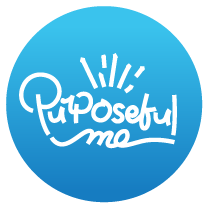
Embracing The Art of Imperfection
Recently during a talk and food demonstration, someone asked me to share my biggest mistake in the kitchen. I had a hard time coming up with an example because I always talk about playing in the kitchen which gives me the freedom to see mistakes or imperfections as part of the ‘Play’ process.
Eventually I remembered an incident when I fried some Potato croquettes but because the temperatures of both the croquettes and the oil were wrong, they ended up exploding into the oil leaving behind a shell which fried to a golden texture and a hollow space that I could pipe a filling into. I loved the result of the mistake more than what I initially planned to make.
I ended my description of the situation by concluding the mistake wasn’t a disaster because I learnt from my it and discovered a new creation in the process.
In our pursuit of creativity, we’re often told to think outside the box, to push boundaries, and to innovate. But what does it truly mean to be creative?

Scott Adams, the creator of the famous comic strip ‘Dilbert’, provides a poignant insight with his words: “Creativity is allowing yourself to make mistakes. Art is knowing which ones to keep.”
This quote beautifully encapsulates the dual nature of the creative process—embracing imperfection and discerning value in the midst of chaos.
At its core, creativity is about freedom. It’s the willingness to explore uncharted territories and the courage to experiment without fear of failure. Mistakes, in this context, are not merely tolerated; they are celebrated.
They are the sparks that ignite new ideas and the stepping stones to innovation. In a world that often glorifies perfection and success, the idea of embracing mistakes can feel counterintuitive. Yet, it’s through these very mistakes that we discover the unexpected, the unique, and the profound.
Consider the creative processes of some of the greatest artists, inventors, and thinkers. Leonardo da Vinci’s notebooks were filled with sketches and ideas that never came to fruition, yet each one was a critical part of his creative journey.
Thomas Edison famously said, “I have not failed. I’ve just found 10,000 ways that won’t work.” These people understood that mistakes are not failures but essential components of the creative process. They allowed themselves the freedom to err, knowing that each misstep was an opportunity to learn and grow.
However, creativity alone is not enough. As Adams suggests, art lies in knowing which mistakes to keep. This is where the real artistry comes in—the ability to sift through the multitude of ideas and missteps and identify those that hold potential.

It’s a skill that requires intuition, experience, and a keen eye for detail. The act of selecting which mistakes to embrace and which to discard is a delicate balance. It involves recognising the beauty in imperfections and the potential in the unexpected.
In practical terms, this means not being overly critical of our work. It’s about trusting the process and understanding that not everything we create needs to be polished and perfect from the start.
The initial stages of creation are often messy, filled with half-formed ideas and rough drafts. This is not a sign of failure but a necessary phase where creativity flows freely. The refinement, the art, comes later—when we carefully curate our work, keeping the pieces that resonate and discarding those that do not.
There are some dishes that I design; and they sound really great on paper but when I return back to them, I spot the elements that will not work. I redesign the dish by making adjustments until I can see it come to life as a full dish. This is a journey that many creators go through – an iterative process that leverages the mistakes and advances on the threads of creativity.
This philosophy extends beyond traditional art forms and applies to all areas of life. In business, innovation often comes from experimenting with new approaches, many of which may not work out.
In relationships, understanding and growth often emerge from navigating misunderstandings and conflicts. In personal growth, we learn the most from our mistakes, gaining wisdom and resilience along the way.

The beauty of embracing mistakes lies in the freedom it grants us. It liberates us from the paralysing fear of failure and allows us to explore the full spectrum of our potential. When we stop fearing mistakes and start seeing them as valuable experiences, we open ourselves up to endless possibilities.
We become more authentic, more adventurous, and ultimately, more creative.
Scott Adams’ words remind us that creativity and art are not about perfection but about exploration and discernment.
Art is the wisdom to recognise the beauty in imperfection and the courage to present it to the world. In this delicate dance between creation and curation, we find the true essence of artistry. So, let’s celebrate our mistakes, for they are the seeds of our creativity and the foundation of our art.
When was the last time you allowed yourself and others to make a mistake? Ever see a child learning to crawl or walk? It’s a a thing of marvel as they fall down and get up. We must learn to become child-like and embrace mistakes, missteps and failures. Then we go again but before we do, we learn the lessons, keep the relevant elements, discard what’s not serving us well and try again.
Thanks for reading and sharing my post. Please subscribe to get it directly in your in-box. Follow me on Instagram @yummy_bydesign and @pur.posefulme.

